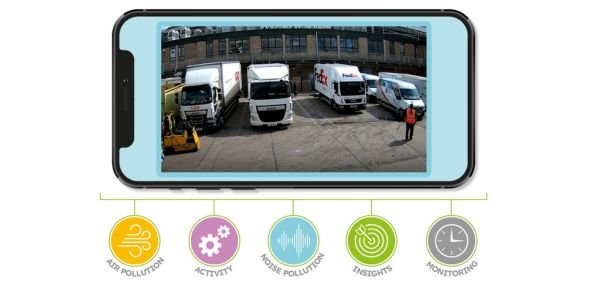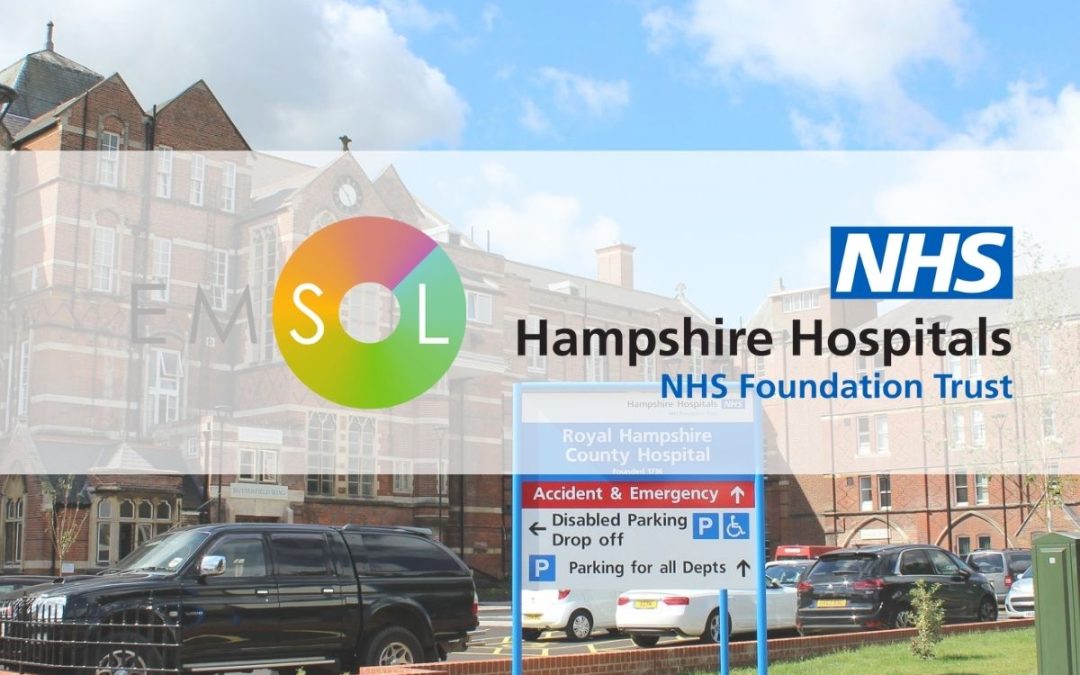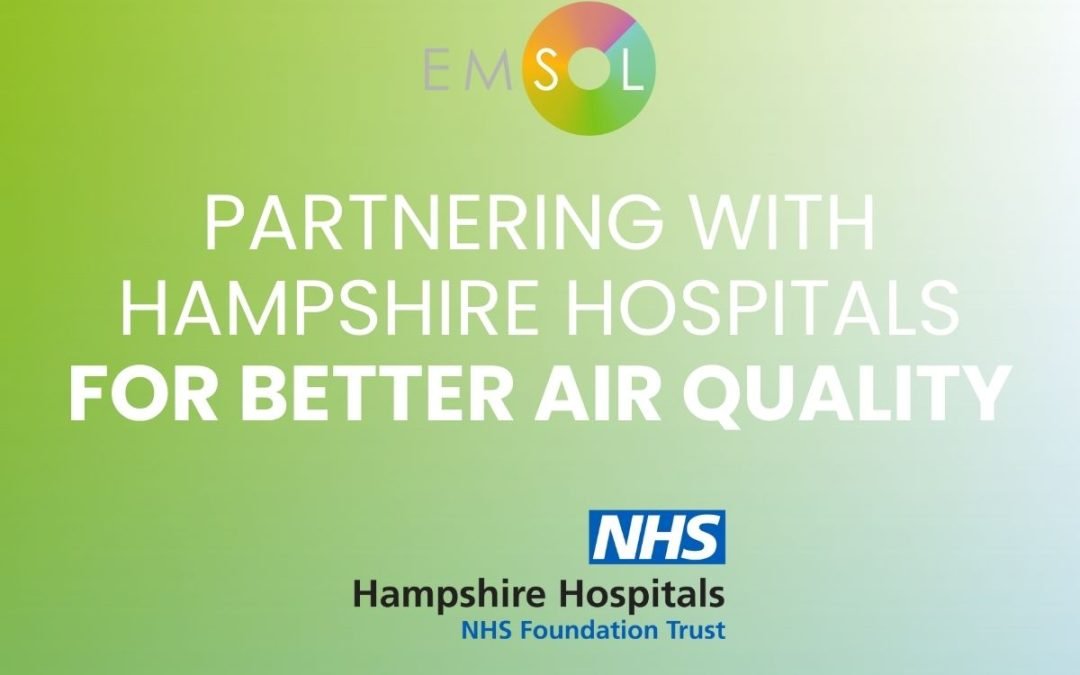The NHS is on a mission to go green, and comprehensive Green Plans are the weapon of choice. Energy efficiency? Check. Waste reduction? Check. Sustainable procurement and transportation? Check. But amidst the flurry of initiatives and targets, there’s an invisible threat lurking in the air: pollution.
Poor air quality is the silent saboteur of NHS sustainability efforts, undermining the health and well-being of patients, staff, and communities while eroding the very foundation of the NHS’s environmental goals. It’s time to shine a spotlight on this critical issue and tackle it head-on and understand how it can be easily managed in your Trust’s Green Plan.
Why Air Quality Must Be a Key Focus in NHS Green Plan
The impact of air pollution on human health cannot be overstated. Exposure to harmful pollutants such as particulate matter and nitrogen dioxide has been linked to a wide range of health problems, including respiratory diseases, cardiovascular disorders, and even cognitive decline.
For the NHS, which serves a population of over 66 million people, the burden of air pollution is particularly significant. Many of the patients seeking care at NHS facilities are already vulnerable due to pre-existing health conditions, making them even more susceptible to the detrimental effects of poor air quality.
Shockingly, a recent study found that over 25% of hospitals and 33% of GP practices in England are located in areas where air pollution levels exceed the World Health Organization’s recommended limits. This means that patients visiting these facilities for treatment are potentially being exposed to dangerous levels of pollutants, undermining the very purpose of their healthcare visits. The risk also extends to NHS staff members, who work tirelessly to provide care for patients.
Addressing air pollution is not only a matter of public health but also aligns directly with the NHS’s core mission of protecting and promoting the well-being of the population it serves. By prioritising air quality in their Green Plan, NHS trusts can take proactive steps to create healthier environments for patients, staff, and local communities.
The NHS has an opportunity to lead by example in the fight against air pollution. As the largest single employer in the UK and a trusted institution in local communities, the NHS has the power to drive meaningful change and inspire action on a larger scale. By demonstrating a strong commitment there is an opportunity to create a ripple effect of positive change.

The Top 3 Challenges NHS Trusts Face in Tackling Air Pollution
- Monitoring pollution levels is no walk in the park
Effectively monitoring pollution levels across hospital sites can be a real challenge. Traditional air quality monitoring methods are time-consuming, expensive, and require specialised equipment and expertise. This makes it difficult for trusts to gather accurate and comprehensive data on the pollutants affecting their facilities.
- Pinpointing pollution culprits is like finding a needle in a haystack
Even when air quality data is available, identifying the specific causes of pollution spikes can be a daunting task. Hospital sites are bustling environments with numerous potential sources of emissions, from delivery vehicles and ambulances to nearby construction projects and equipment. Pinpointing the exact contributors to poor air quality requires a level of granularity and real-time analysis that is often beyond the capabilities of manual monitoring efforts.
- Air quality management can feel like a never-ending headache
These challenges can make addressing air quality feel like a daunting headache for NHS trusts. Sustainability teams may find themselves overwhelmed by the complexity of the issue. This can lead to a sense of frustration and helplessness, as Trusts grapple with the desire to improve air quality but lack the tools and resources to do so effectively.
How EMSOL Makes Managing Air Quality Easy for Trusts
Enter EMSOL, the game-changing air quality monitoring and analytics platform that is changing how NHS trusts approach pollution management. Developed in close partnership with NHS trusts such as Guys and St Thomas and other Trusts across England, EMSOL offers a comprehensive solution that simplifies the process of tackling air quality and enables trusts to meet their Green Plan commitments with ease.
At the heart of EMSOL’s platform is its real-time monitoring technology. By deploying a network of advanced sensors across hospital sites, EMSOL captures accurate, minute-by-minute data on a range of pollutants, including particulate matter, nitrogen oxides, and noise. This gives unprecedented level of visibility into the air quality on their site.
But EMSOL goes beyond simply collecting data. Its powerful analytics engine highlights the root causes of pollution. By correlating air quality data with on-site activities, EMSOL pinpoints the specific sources of emissions, whether it’s idling ambulances, delivery truck congestion, or construction equipment. This level of visibility is crucial for Trusts, as it enables them to prioritise mitigation efforts and allocate resources where they will have the greatest impact.
By providing a comprehensive, user-friendly solution, EMSOL removes the headache of managing air quality and makes meeting Green Plan commitments a breeze. Trusts no longer have to grapple with the complexities of monitoring, analysing, and mitigating pollution, as EMSOL takes care of the heavy lifting.
Case Study: Guys & St Thomas NHS Foundation Trust
To illustrate the transformative impact of EMSOL in action, let’s take a closer look at the success story of Guys & St Thomas NHS Foundation Trust. As one of the largest and most prestigious healthcare institutions in the UK, Guys & St Thomas has set ambitious goals in their Green Plan, with a particular focus on improving air quality across their hospital sites. Prior to partnering with EMSOL, the Trust faced significant challenges in monitoring and managing air pollution. Despite their best efforts, they struggled to gather accurate data.
In search of a solution, Guys & St Thomas embarked on a multi-year collaboration with EMSOL. By deploying EMSOL’s cutting-edge monitoring and analytics platform across their sites, the Trust gained unprecedented visibility into their air quality situation. The real-time data and actionable insights provided by EMSOL allowed them to pinpoint the specific sources of pollution, from delivery vehicle idling to construction activities.
Perhaps most importantly, the partnership with EMSOL allowed Guys & St Thomas to demonstrate measurable progress towards their sustainability commitments. By showcasing the positive impact of their air quality initiatives, the Trust enhanced its reputation as a leader in sustainable healthcare and inspired other organisations to follow suit.
Don’t just take our word for it. Here’s what Tanja Dalle-Muenchmeyer, the Trust Air Quality Manager at Guys & St Thomas, had to say about their experience with EMSOL:
“As an NHS Foundation Trust and anchor institution, we are keen to reduce our contribution to poor local air quality and its effects on human health. The EMSOL technology has been instrumental in helping us understand local pollution levels, identify sources, and take targeted action to improve the situation. The ease and effectiveness of the EMSOL platform have made achieving our air quality goals a reality.”
The success story of Guys & St Thomas is a testament to the transformative power of EMSOL in simplifying air quality management for NHS trusts. By providing the tools, insights, and support needed to tackle pollution head-on, EMSOL empowers trusts to achieve their Green Plan goals with confidence and ease.

5 Ways EMSOL Helps NHS Trusts Check the Air Quality Box on Their Green Plans
EMSOL’s offering can help you integrate aspects covered within the Global Action Plan Clean Air Hospital Framework. Through our fully managed service, EMSOL empowers hospitals to align with the framework’s following topics:
- Tackling Travel Emissions
- Monitors and identifies pollution events from vehicle activity
- Can enable you to consider optimisation of traffic and deliveries to reduce overall travel-related emissions
- Sustainable Supply Chain and Procurement
- Supports emissions monitoring and tracking in supply chain
- Assesses the environmental impact of deliveries across suppliers
- Facilitates progressive engagement and informed procurement decisions aligned with air quality goals
- Ensuring Green Design and Construction
- Monitors emissions and assesses environmental impact during construction activities
- Identifies construction-related pollution sources, such as NRMM and contractor activity
- Can therefore help minimise pollution associated with new construction and renovation projects
- Ensures adherence to Local Authority regulations and high environmental standards
- Enhancing Local Air Quality
- Provides real-time air quality monitoring
- Offers actionable data by linking to pollution to a cause
- Enables evidence-based decision-making and mitigation
- Helps track progress towards goals outlined in the Clean Air Hospital Framework
- Empowering Communication and Training
- Equips staff with improved knowledge and understanding of air pollution sources by demystifying air pollution
- Supports the Clean Air Hospital Framework’s objectives for communication and training
If you’re an NHS trust looking to prioritise air quality in your Green Plan, we invite you to take the first step towards a cleaner, healthier future. Contact EMSOL today to learn how our approach can simplify your air quality management and help you achieve your sustainability goals with confidence. Together, we can create a world where clean air is the norm, and the well-being of patients, staff, and communities is always at the forefront of healthcare delivery.





